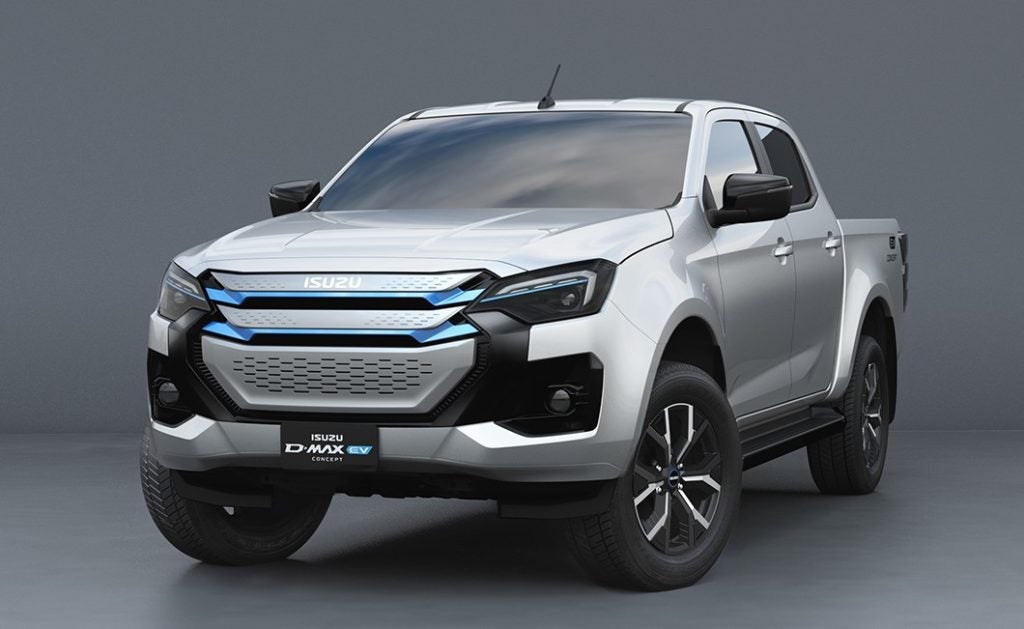 Cadillac’s long-awaited Catera replacement, the 2003 CTS designed with what General Motors calls an “art and science approach to passenger car design”, will debut on August 18 at the Pebble Beach Concours d’Elegance in Monterey, California.
Cadillac’s long-awaited Catera replacement, the 2003 CTS designed with what General Motors calls an “art and science approach to passenger car design”, will debut on August 18 at the Pebble Beach Concours d’Elegance in Monterey, California.
Cadillac’s press release writers describe the “chiseled body” as “lean, with sheer forms, sharp edges and crisp intersecting lines”.
Whatever. The in-house design is certainly strikingly different from the Opel-penned, Cadillac once-over look of the Omega-based, German-built Catera the CTS replaces.
“In our first century of existence, many memorable designs have set Cadillac apart from the other luxury cars in the crowd,” gushed Cadillac general manager Mark LaNeve, a recent recruit from Volvo Cars’ North American operations.
“CTS will turn heads in a segment that typically refines, rather than defines, automotive styling. It’s a modern interpretation of the strikingly beautiful cars for which Cadillac became famous. In short, it’s a classic Cadillac for the 21st century.”
The CTS, rear-drive like the Catera, is built on an all-new platform and will be available with a manual transmission mated to a 3.2-litre V6 that can accelerate from 0-60 mph in under seven seconds. It’s a while since Cadillac fielded a sporty stickshift sedan with credentials like that.
How well do you really know your competitors?
Access the most comprehensive Company Profiles on the market, powered by GlobalData. Save hours of research. Gain competitive edge.

Thank you!
Your download email will arrive shortly
Not ready to buy yet? Download a free sample
We are confident about the unique quality of our Company Profiles. However, we want you to make the most beneficial decision for your business, so we offer a free sample that you can download by submitting the below form
By GlobalDataThe name CTS is also a Big Change in Cadillac terms.
“As part of our global initiative, this car will sell alongside other Cadillacs in showrooms in Europe and Asia,” LaNeve said.
“Customers in other parts of the world are accustomed to alphanumeric names for their vehicles, and, eventually, all our vehicles will have names that reflect our global nature.”
Cadillac says its CTS design team was told to give the new car a uniquely American look which reflects the new design philosophy first shown on the division’s Evoq concept car.
 |
The 2003 CTS |
This, they say, “communicates American technology and science. From computer-generated forms to high-tech, aerospace-influenced materials and textiles, these designs will showcase technology and an overt expression of craftsmanship”.
In CTS terms, the result is crisp panel and shut line intersections, a short front overhang and sharp edges a styling generation away from the curvy Catera.
Cadillac says that the CTS design team had two objectives for the profile view: Use the feature line as the dominant theme, and accentuate the stance of the vehicle.
The rear track of CTS is a fixed design point, as is the fender flare so the vehicle sides were tucked in slightly to enhance that flare for a more tailored look. The sail panel also enhances the ‘fast formal’ look, giving the car a sportier appearance.
Cadillac’s traditional vertical headlights and tail lights first appeared in 1965. On the CTS, the integrated headlights are a modern interpretation of that and are intended to convey the high-tech image of optical instruments and high-end camera lenses.
Thin and tall, they create more space for the large louvered egg-crate grille – another Cadillac staple feature which dates back to 1934.
The rear view is intended to complement the front (remember the Seville that looked like the front and rear were styled by different teams?) with a full-colour wreath and crest on the centre line and a full-width V-shaped boot lid shut line.
The interior shows encouraging signs of not reverting to Cadillac’s one-time acres of velour, fake chrome and wood ‘luxury look’.
Cadillac describes its choice of colours and materials as “warm, rich and inviting” with ‘wood’ used only in areas where the customer will contact it, such as on the steering wheel, gear shifter knob and door pulls.
Rivals ‘benchmarked’ during powertrain and suspension development included BMW’s acclaimed 528i sedan and the new CTS has been tested where the BMW engineers go to play: on Germany’s famed Nürburgring motor race circuit.
The new 3.2-litre V6 is a completely re-engineered version of the Catera’s 3.0-litre V6 which has already appeared in Opel’s Omega and Vectra in Europe.
For the new Caddy, this engine produces 220 hp at 6,000 rpm and 218 lb-ft of torque at 3,400 rpm.
Along with the 200cc boost, the engine has been fully revised to improve driveability, power, torque and emissions.
Strategic Review- |
While most V6 engines use a 60-degree inclination, the Cadillac unit has a 54-degree bank angle to accommodate CTS packaging requirements. The 54-degree angle between the cylinder banks is unique among GM four-camshaft V6s and makes it appropriate for both transverse and longitudinal applications.
In the CTS, the engine is hooked up to either a five-speed manual or five-speed automatic transmission.
The Getrag five-speed manual uses a rod-actuated shift linkage and is said to be durable and smooth with accurate shift feel.
The five-speed electronically controlled automatic transmission, the 5L40-E Hydra-Matic, is a first for GM and is shared with the BMW 5 Series and X5 SUV.
Its electronically controlled capabilities include a three-mode shift pattern selector and shift patterns that adapt to driving conditions and driver style, traction control capability, engine torque management during shifts and powertrain protection capabilities.
Another electronic feature is also a GM first: engine braking in all five gears, giving the automatic the same sporty feel as a downshifting manual.
The 5L40-E also has the unique ability, in Sport mode, to identify high-performance demands from the driver and hold a gear indefinitely through a corner after his foot is lifted off the accelerator pedal.
Cadillac has targeted the best build quality possible for the CTS by careful design of the new Sigma platform and shifting final assembly from Germany to the brand new, state-of-the-art $560 million assembly plant in Lansing, Michigan.
The new plant, GM’s first in the United States since 1986, is claimed to bring the best manufacturing practices from around the world to one facility.
Workers helped design tools and equipment for the plant to help enhance ergonomics and performance and GM committed to a collaborative partnership with United Auto Workers Local [branch] 652 to implement manufacturing processes that will enhance both quality and competitiveness.
The plant is projected to employ 1,500 people once it is fully operative.
“Lansing Grand River is a world-class facility, which will help us realise the vision of making CTS the world-class car it was designed to be,” said LaNeve.
“The CTS is very significant, but it’s just the beginning. Our centennial year is upon us, and more exciting products will follow CTS into the marketplace in the very near future.”
To view related research reports, please follow the links below:- Automotive regional report: North America The world’s car manufacturers: A financial and operating review |







